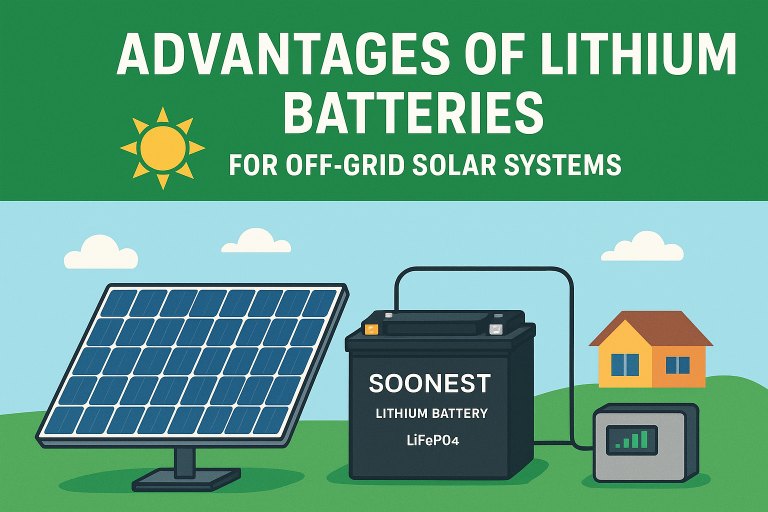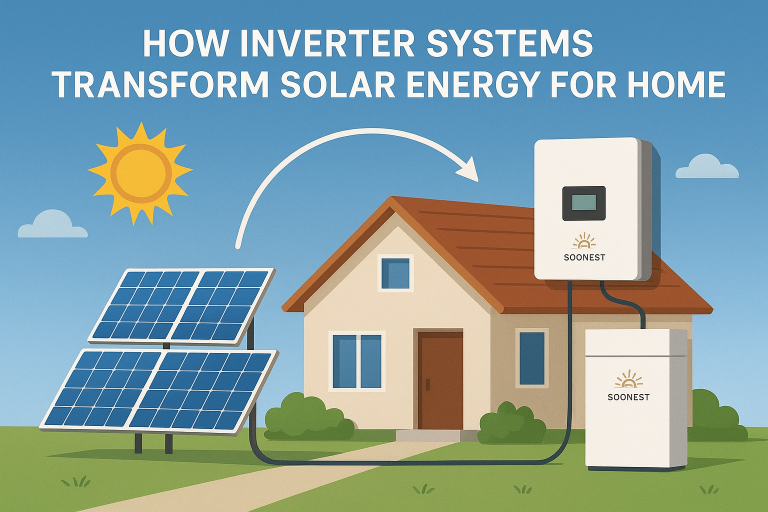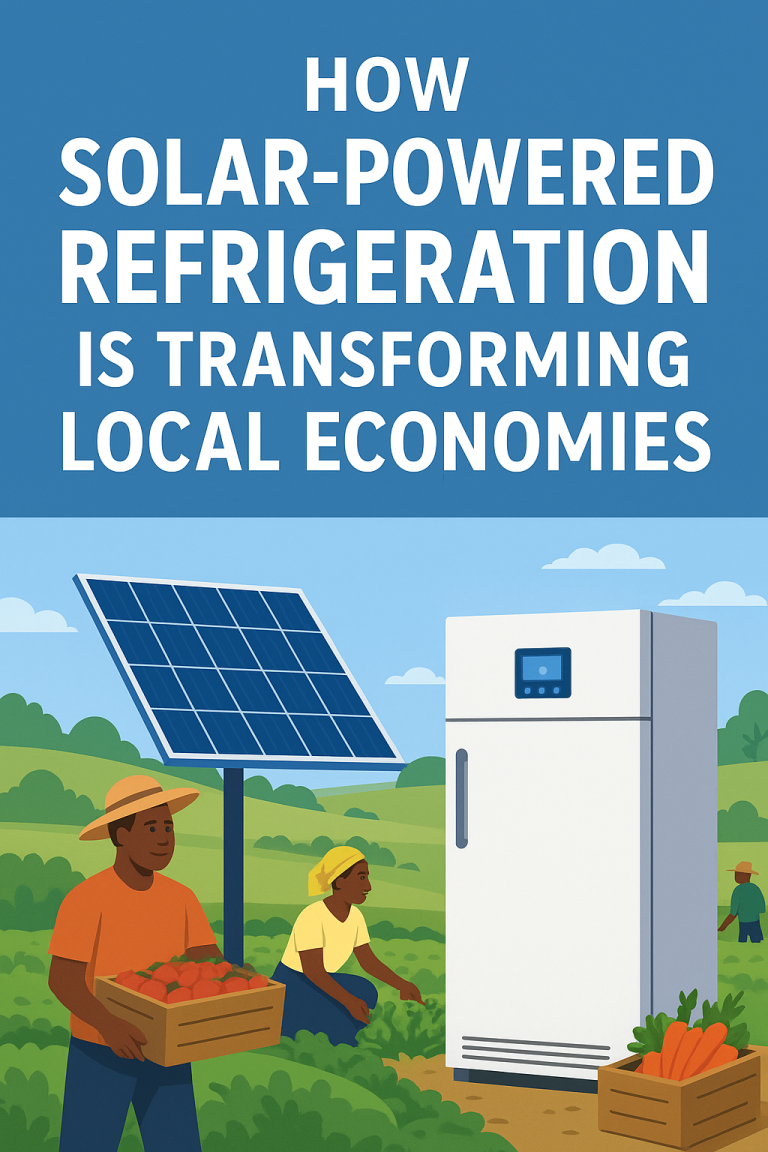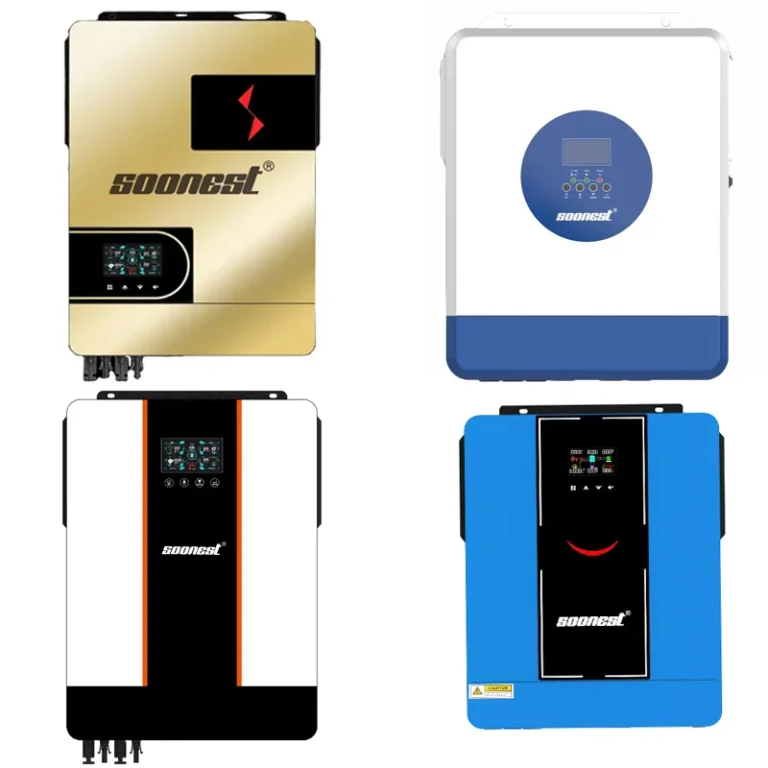Los precios de las baterías solares dependen de cosas como la química: AGM y GEL son tipos de plomo-ácido más baratos, mientras que los de litio LiFePO4 son más caros pero tienen más impacto; mayor capacidad (como 250Ah) o voltaje (24V) aumenta el costo para manejar más energía. El Departamento de Defensa le permite drenar el litio más profundamente sin destruirlo, y la eficiencia significa menos desperdicio con el tiempo. Más prontoLas baterías GEL y LiFePO4 son opciones sólidas con inteligencias incorporadas como BMS, que duran 3.000 ciclos para hogares fuera de la red o copias de seguridad, ahorrando dinero a largo plazo.
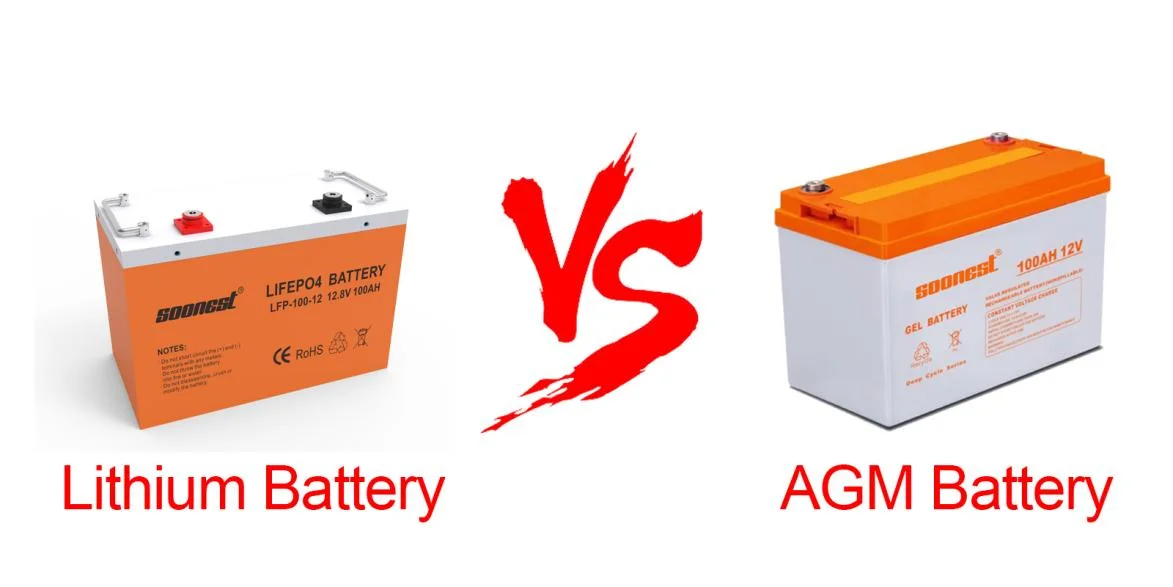
¿Qué factores técnicos influyen en el precio de las baterías solares?
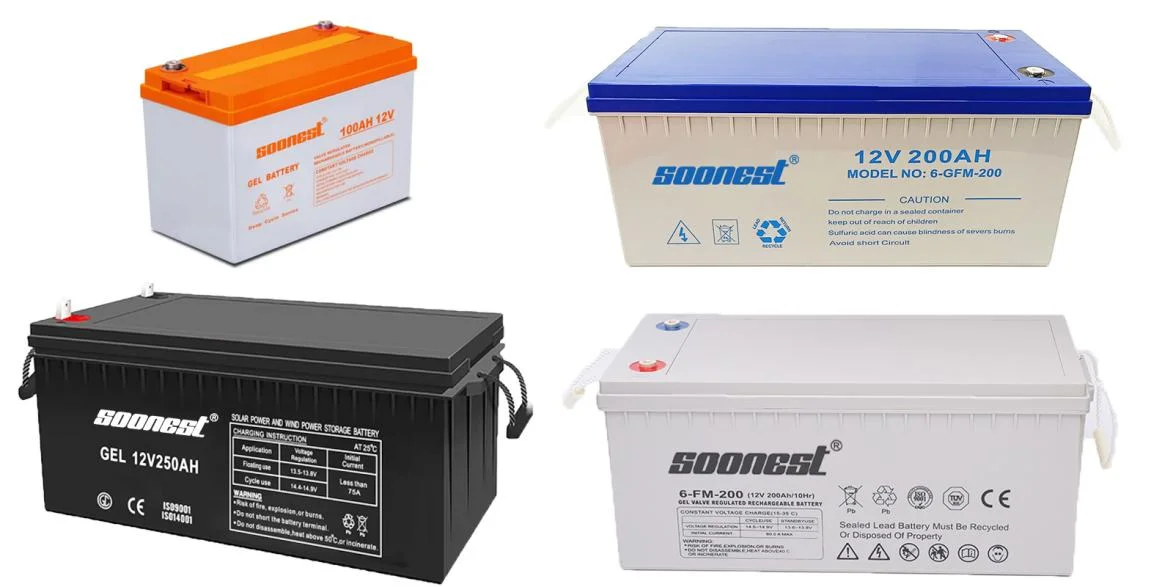
¿Cómo la química de la batería y los costos de materiales contribuyen a las diferencias de precios?
La química de las baterías es una de las principales cosas que cambian el precio de las baterías solares. Diferentes baterías se construyen de diferentes maneras, y esto cambia cuánto cuestan fabricar, cómo funcionan y cuánto duran. Los tres tipos que se ven con más frecuencia son AGM, GEL y LiFePO4. Parecen similares por fuera pero actúan de manera muy diferente por dentro.
AGM (Absorbent Glass Mat) y GEL son baterías selladas de plomo-ácido. AGM utiliza alfombras de vidrio delgadas para retener el líquido. El GEL mezcla el ácido con un grueso material gelatinoso hecho de sílice. Ese pequeño cambio hace que las baterías GEL manejen mejor el calor y las descargas más profundas. La célula solar más rápida Batería GEL 12V 100AH 150AH 200AH 250AH es un ejemplo. A menudo se utiliza en paneles solares, sistemas eólicos e incluso en cabinas que están completamente fuera de la red. Puede permanecer sentado durante meses y todavía estar listo para ir cuando sea necesario.
Las baterías LiFePO4 (fosfato de litio y hierro) son de un tipo diferente. Pueden retener más energía en el mismo espacio, cargarse más rápido y por lo general durar muchos ciclos más. Pero cuestan más. Una razón es el precio del litio, que salta arriba y abajo en el mercado global. Cuando el litio se vuelve caro, también lo hacen estas baterías. Desde que las baterías de iones de litio comenzaron a producirse en grandes fábricas en 1991, se han vuelto comunes en todo, desde teléfonos hasta coches eléctricos y sistemas solares.
¿Por qué importan la capacidad de almacenamiento y las calificaciones de voltaje para el costo?
El costo de la batería también depende de la cantidad de energía que pueda contener. Una batería de 250Ah tiene más material activo dentro que una de 100Ah. También es más grande, por lo que cuesta más. El voltaje también juega un papel. Una batería de 12V generalmente se adapta a sistemas pequeños como luces de jardín o configuraciones de RV. Una batería de 24V encaja mejor con sistemas más grandes como talleres o tiendas pequeñas.
Incluso dentro del mismo tipo, los números de Ah más grandes significan un costo más alto. Pueden funcionar por más tiempo y manejar mejor el uso pesado. Una batería GEL de 200Ah puede mantener las luces y los ventiladores funcionando durante la noche, mientras que una versión de 100Ah podría durar solo la mitad de ese tiempo. En lugares soleados y calientes, los más grandes también manejan mejor el uso diario.
¿Cómo afectan la profundidad de descarga (DoD) y la eficiencia al costo a largo plazo?
Profundidad de descarga (DOD) significa la cantidad de energía que puede usar una batería antes de volver a cargarla. Las baterías de litio a menudo le permiten usar hasta el 90% de su energía almacenada. Los tipos GEL o AGM son más seguros en el 50-70% del DoD. Si los drenas demasiado profundamente, se desgastan mucho más rápido.
La eficiencia también importa. Las baterías de litio suelen desperdiciar menos energía. Si cargas una con 100 vatios y recuperas 95 vatios, eso es genial. Si solo recuperas 80 vatios, esos 20 vatios perdidos se suman a lo largo de los años. Significa más paneles, más tiempo de carga y más coste.
¿Qué papel juega el diseño del producto en la fijación de precios?
La calidad del diseño también afecta el precio. En las baterías de GEL, el gel permanece en el interior y no se filtra. Esto mantiene la reacción en el interior uniforme y estable. Esto hace que la batería funcione bien incluso en calor y reduce la necesidad de mantenimiento. Es útil para lugares donde la gente no revisa las baterías a menudo, como cajas en el techo o cobertizos calientes.
Las baterías de litio son más complejas. Tienen pequeñas tablas de control, sistemas de equilibrio y sensores de temperatura dentro. Estas piezas cuestan dinero, pero protegen la batería y la ayudan a durar más tiempo. Piense en ello como un pequeño "guardián" dentro de vigilar las células.
¿Existen diferencias estructurales que afecten la durabilidad y el valor?
- Sí. - Sí. La forma en que se construye una batería en el interior cambia lo resistente que es. GEL y AGM son simples y pueden soportar golpes o temblores, por lo que funcionan bien en campervans o barcos. Las baterías de litio tienen muchas células pequeñas dentro de una caja sólida. Esta cáscara fuerte les ayuda a durar más tiempo, pero también cuesta más hacer.
¿Cuán importantes son las características de seguridad como BMS o certificaciones?
Un sistema de gestión de baterías (BMS) es muy importante en las baterías de litio. Controla la carga y detiene problemas como sobrecarga o sobrecalentamiento. Un buen BMS aumenta el precio, pero mantiene la batería segura y saludable durante años.
Certificaciones como CE o UL también son importantes. Mostran que la batería pasó las pruebas de seguridad. Esto es clave si los instala en lugares públicos como oficinas o escuelas. Las baterías más baratas sin estas etiquetas pueden causar problemas durante las inspecciones posteriores.
¿Qué determina el valor de rendimiento a largo plazo?
¿Cuántos ciclos puedes esperar de cada tipo?
La vida útil muestra cuántas veces puedes cargar y vaciar completamente una batería antes de que se debilite. Las baterías GEL suelen dar entre 500 y 1.000 ciclos si se usan con cuidado. Eso podría ser de tres a cinco años para un sistema de energía de respaldo que no funciona todos los días.
Las baterías de litio pueden alcanzar 3.000-5.000 ciclos o más. Esto a menudo dura más de diez años si se usa diariamente. A medida que la industria de las baterías de litio ha crecido, también se han vuelto mucho más baratas de lo que solían ser.
¿Qué hay de las necesidades de mantenimiento y estabilidad operativa?
Las baterías de plomo-ácido más antiguas necesitaban rellenarse y limpiarse. Las baterías AGM y GEL están selladas ahora, por lo que no necesitan eso. Las baterías de litio son más fáciles. Están totalmente sellados, no necesitan recargar y funcionan sin problemas incluso si el uso de energía aumenta y disminuye mucho. Esto los hace fáciles de instalar y usar.
Menos necesidades de atención significan menos errores. Si alguien olvida comprobar una batería vieja y se seca, puede morir. Eso no sucede con los tipos sellados, especialmente el litio.
¿Pueden estas baterías manejar entornos duros?
Sí, si están bien hechos. El calor, el frío y el aire húmedo pueden dañar rápidamente las baterías baratas. Algunos se hinchan, se agrietan o pierden energía rápidamente en lugares calientes o nevados. Los buenos muestran su rango de temperatura seguro en la etiqueta. Las baterías GEL a menudo manejan bien el frío. Los de litio manejan mejor el calor si tienen una buena refrigeración.
El tamaño también importa. En espacios pequeños como los armarios de RV, un diseño compacto vale más. Hace que el cableado sea más sencillo y deja espacio para otros equipos.
¿Cuáles son las aplicaciones más adecuadas para diferentes tipos de baterías?
¿Estás alimentando una casa o una instalación comercial?
Los hogares pequeños a menudo pueden usar solo unas pocas baterías GEL para luces y ventiladores. Son más baratos y buenos para uso ligero. Las empresas con máquinas pesadas o sistemas de refrigeración necesitan baterías de litio más fuertes. Muchos modelos de litio también se pueden vincular para construir grandes bancos de almacenamiento.
En los sistemas solares, los paneles cargan las baterías durante el día. Por la noche o cuando la red se apaga, el sistema cambia a la batería. Esta configuración es común tanto en hogares como en empresas que quieren energía constante y facturas más bajas.
¿Funcionará con su infraestructura solar existente?
Las baterías deben coincidir con sus controladores de carga e inversores. La mayoría de las nuevas baterías de litio tienen puertos inteligentes como RS485 o CAN. Estos les permiten hablar con los inversores y mostrar datos en vivo en una pantalla o aplicación. Las baterías GEL y AGM no hacen esto, pero funcionan con casi cualquier cargador básico.
¿Es el precio inicial realmente el factor más importante?
¿Cuál es el costo real a lo largo del tiempo en comparación con el precio de compra inicial?
El primer precio es solo parte de la historia. Una batería de litio Podría costar más ahora pero durar mucho más. También devuelve más de la energía que almacena. Con el tiempo, eso significa que pagas menos por kilovatio-hora. Comprar varias baterías de plomo-ácido durante diez años a menudo cuesta más que comprar una batería de litio una vez.
Es como los scooters eléctricos. Costan más por adelantado, pero son mucho más baratos de ejecutar que los scooters de gas.
¿El soporte de garantía agrega seguridad financiera?
- Sí. - Sí. Las largas garantías muestran que el fabricante confía en su producto. Las baterías GEL a menudo vienen con aproximadamente cinco años de cobertura. Los de litio pueden venir con hasta diez. Estos cubren fallos tempranos y grandes caídas en el rendimiento. Si utiliza la batería como se indica, no tendrá que pagar de nuevo si muere demasiado pronto.
Por qué elegir lo más pronto para sus necesidades de batería solar
Soonest hace baterías para uso solar real. Ofrecen tanto tipos GEL como LiFePO4. La batería GEL de célula solar más rápida 12V 100AH 150AH 200AH 250AH funciona bien para configuraciones de respaldo o fuera de la red. Sus modelos de litio son lo suficientemente fuertes para sistemas más grandes como microredes o sitios comerciales.
Realizan tamaños de 100Ah a 250Ah y versiones de 12V y 24V. Muchos tienen ventilaciones inteligentes o unidades BMS incorporadas. También llevan marcas de seguridad CE y UL, que son importantes para las normas de construcción. Incluso con estos extras, sus precios se mantienen justos.
Ellos también ayuda Después de comprar. Gestionan reclamaciones de garantía y dan asesoramiento de configuración. Esto ahorra tiempo y estrés si algo sale mal más tarde.
Preguntas frecuentes
P: ¿Cuánto tiempo dura una batería solar típica de LiFePO4?
R: Las buenas baterías LiFePO4 a menudo duran 3.000-5.000 ciclos completos. Eso es más de diez años si se usa diariamente.
P: ¿Vale la pena pagar más por adelantado por una batería de litio en lugar de GEL?
R: Sí. Las baterías de litio duran más tiempo, le permiten usar más de su energía almacenada, funcionan de manera más eficiente y no necesitan mantenimiento. Esto reduce el costo real con el tiempo.
P: ¿Puedo mezclar diferentes voltajes o capacidades en un sistema?
R: No es una buena idea a menos que un profesional lo diseñe de esa manera. Las baterías mixtas pueden luchar entre sí o romper partes. Utilice las mismas especificaciones a menos que tenga un equipo de equilibrio inteligente.

